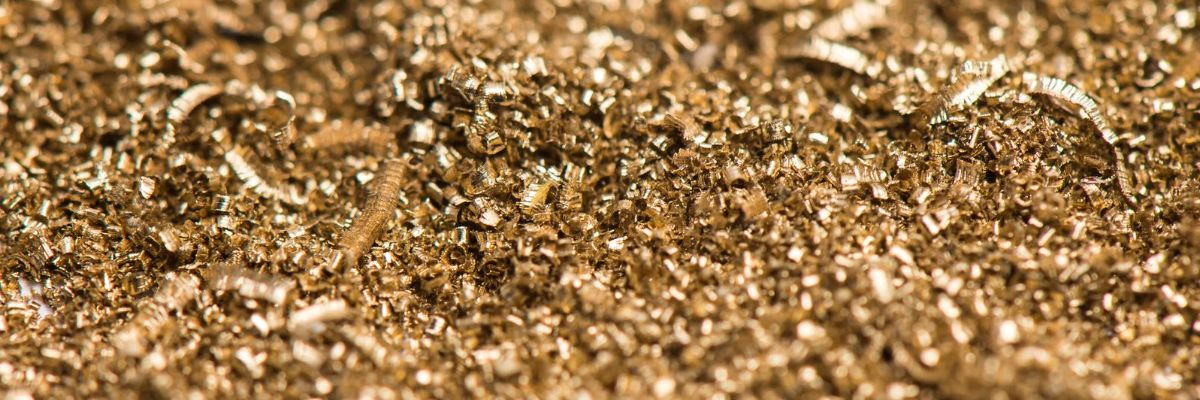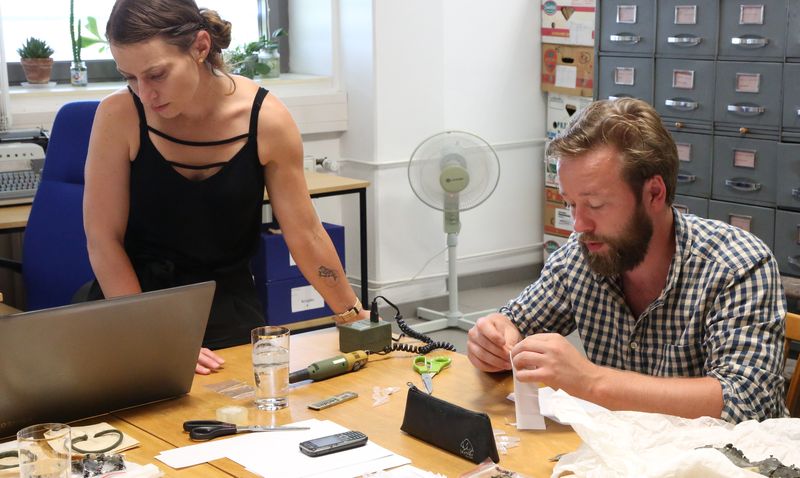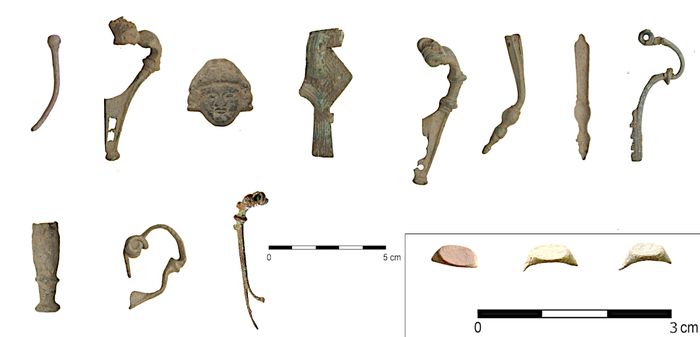
Ancient brass reveals the interconnectedness of the world at that time
16. 03. 2022
Ancient brass jewellery, clasps or pins found by archaeologists in the territory of the current Czech Republic come from the ore deposits of the Roman Empire. This discovery shows the intensity of the contact between the Romans and Germanic ethnic groups. Interestingly, scientists have also traced the origin of the brass to the French Central Highlands, which the Romans had controlled shortly before, and which thus became an important economic asset for the Roman Empire.
Brass - an alloy of copper and zinc - was a prized material in antiquity, especially because of its gold-like appearance. Within a few decades, it became a key raw material in central and northern Europe of the Iron Age. Until now, however, it was not entirely clear where brass came from.
The production of brass is quite demanding, and due to the complexity of the production process, it is often attributed to the skill of ancient workshops. Ancient brass has even got its own name: aurichalcum.
Where did brass come from in the territory of today's Bohemia?
Bohemia is an ideal location for research into the origins of brass, as many brass objects from various periods have been found in this area in various places, even as early as the late Iron Age oppida of Stradonice and Závist. Brass has been found most often in the graves of the medium-rich and wealthy people. It must have been imported in large quantities.
"To equip one generation of the population in Bohemia and Moravia in ancient times, it was necessary to import of tons of this metal,” illustrates Daniel Bursák from the Institute of Archaeology of the CAS, Prague.

Preparation of the samples
Between 2019 and 2021, a team of scientists from several institutions led by researchers from the Institute of Archaeology of the CAS, Prague, and the Czech Geological Survey carried out for the first time an advanced statistical analysis of brass objects from the end of the Early Iron Age to the earlier Roman period from the territory of Bohemia (approximately 1st century BC - 2nd century AD). The analysis was based on the chemical composition and isotope systematics of lead, which is always present in such materials.
"If we look at the isotope map of lead in Europe and outside Europe, it forms well-separated clusters - so lead can be a significant indicator of where the material for making, for example, brass products comes from," explains Tomáš Magna of the Czech Geological Society.
"We took one to five hundredths of a gram, so you can hardly tell on the objects that something has been taken from them. It's done with a mini-drill, which you use to tap the object and shavings of the metal fall off," explains Daniel Bursák.
Roman brass wherever you look
The researchers analysed a total of 50 different objects, including buckles, rings, needles, and belt parts. The results, published in the prestigious Nature Scientific Reports journal, show that most of the brass objects from the territory of ancient Bohemia are linked to ore deposits in the western Mediterranean or the French Central Highlands.
"Whatever sample we took, we found it was Roman brass. It was almost a surprise to us how strictly the foreign, Roman raw material was used," admits Daniel Bursák.

The new findings prove the intensive contact between the Roman Empire and Germanic ethnic groups on the Czech territory.
"We are increasingly confirming that brass was distributed in the society of the time quite widely, without the expected concentrations in the population that had intensive contact with the Romans," explains Daniel Bursák.
Why to study brass
Brass became a widely used material for coinage, jewellery, and other artefacts in the Mediterranean in the 1st century BC, and soon, it also spread into central Europe - whether its transport was motivated by trade, diplomatic contacts, or other mechanisms.
Finding out the origins of brass is not just a whim of researchers, quite the opposite. Finding out where various objects and materials come from provides valuable information about the socio-economic situation at the time and about relationships that are key to understanding historical events.
After a successful first stage of research, the researchers are now preparing the next stage: they will investigate the origins of brass, which was massively used by the Romans to make coins.
Text: Eliška Zvolánková, Division of External Relations, CAS Centre of Administration and Operations
Photos: Institute of Archaeology of the CAS, Prague; Czech Geological Survey; Daniel Bursák; Shutterstock
Read also
- British historian Mark Cornwall honoured by the Czech Academy of Sciences
- Tropical biologist Vojtěch Novotný’s research forays into Papua New Guinea
- The Czech Academy of Sciences supports scientists in Ukraine / Академія наук Чеської Республіки підтримує українських науковців
- Infested trees call for help from birds and predatory insects
- One million visitors at the Czech pavilion at EXPO 2020 Dubai
- Seed-rich strips help birds and mammals to survive the winter
- Immune cells teach each other to distinguish pathogens from body’s own cells
- The Czech Academy of Sciences announces fellowships for researchers from Ukraine
- A green diet: thanks to Czech scientists, more microalgae species to appear on the market
- The CAS suspends or ends scientific activities in Russia and Belarus
The Czech Academy of Sciences (the CAS)
The mission of the CAS
The primary mission of the CAS is to conduct research in a broad spectrum of natural, technical and social sciences as well as humanities. This research aims to advance progress of scientific knowledge at the international level, considering, however, the specific needs of the Czech society and the national culture.
President of the CAS
Prof. Eva Zažímalová has started her second term of office in May 2021. She is a respected scientist, and a Professor of Plant Anatomy and Physiology.
She is also a part of GCSA of the EU.